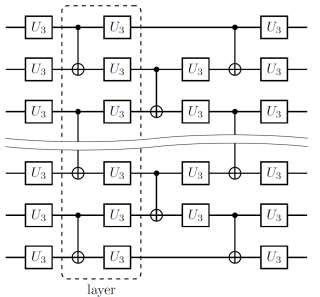Manipulating topological quantum states with python programming – the IBM quantum computer experience
Even as recent as 10 years ago, it would be unthinkable for us to fiddle with quantum states halfway around the world, let alone perform meaningful physics simulation with them. Yet, in a new project led by Asst Prof Lee Ching Hua, which is published a top quantum information journal npj Quantum Information (https://www.nature.com/articles/s41534-022-00527-1), a group of 4 undergraduates managed to do just that with the IBM quantum computer.
A quantum computer is essentially a contraption that allows one to program instructions on a predefined quantum state through a sequence of quantum gates known as a quantum circuit. They are called “computers” because the gates are sufficiently versatile – i.e. universal – such that it is possible for the sequence of quantum gates to perform any desired algorithm on the state. In the case of the IBM quantum computer, the hardware is made out of superconducting quantum circuits, and the entire quantum circuit can be programmed via a Python-like language over the cloud.
Although quantum computers are by no means well-established commercial technology, the team managed to simulate a number of unique and robust topological states with it, beyond what is possible in actual materials. As remarked by Phee Yong Han, a second-year Physics student, “The main obstacle facing quantum computing is to decrease the computation error rate by making them more reliable. Our work overcame existing hardware barriers by using tensor network-aided circuit recompilation techniques to achieve the stabilisation of quantum lattice systems.”.
The prospects of quantum computation are staggering, with quantum computers eventually expected to outperform classical computers in important tasks such as data decryption. Said Ng Wei En, a second-year Computing student, “While quantum computing is still in its infancy, we believe that as increasingly larger quantum computers are developed, quantum computers will eventually outstrip the capabilities of classical computers in quantum simulations, paving the road for Feynman’s vision.”

